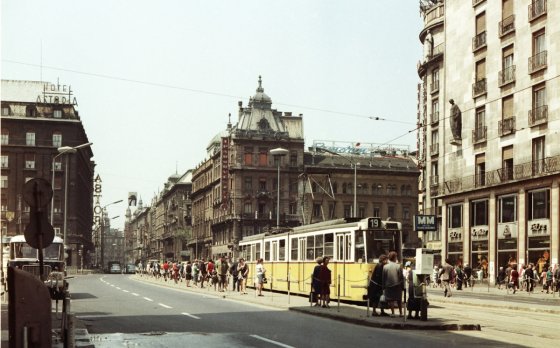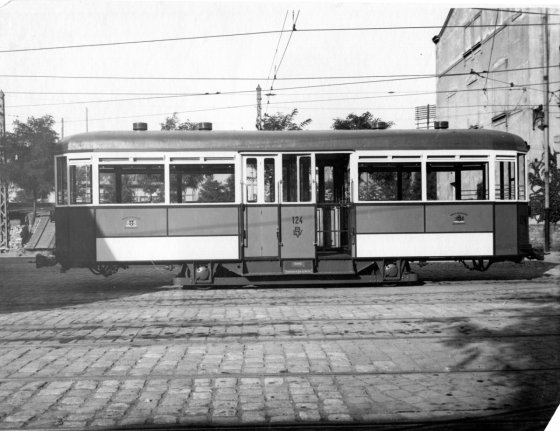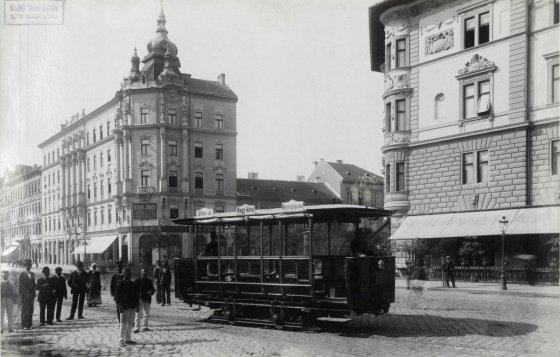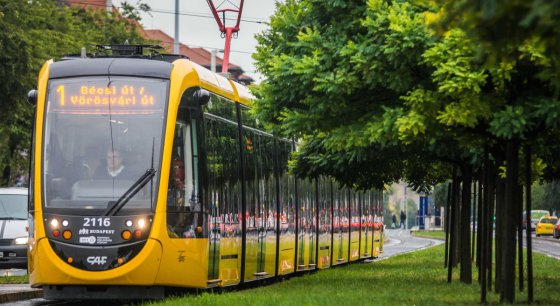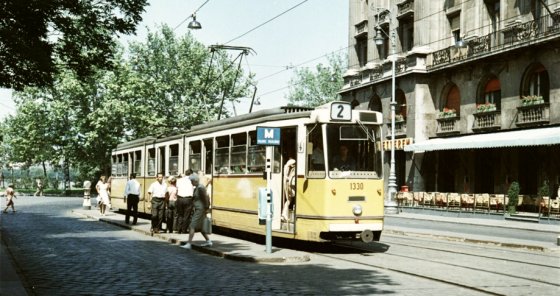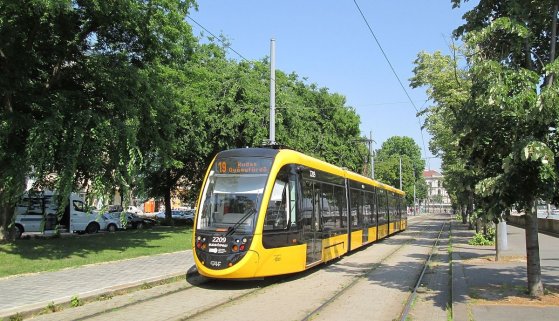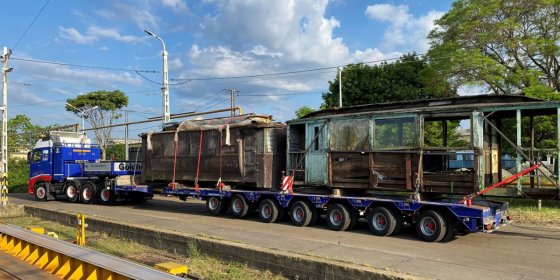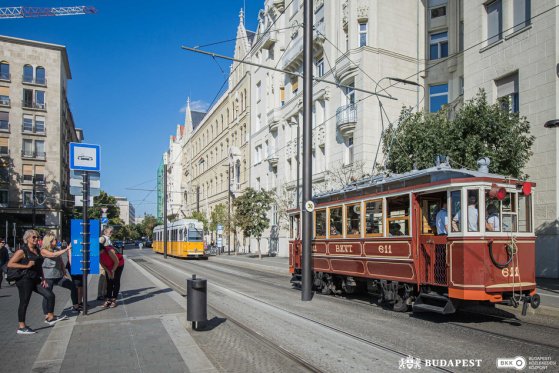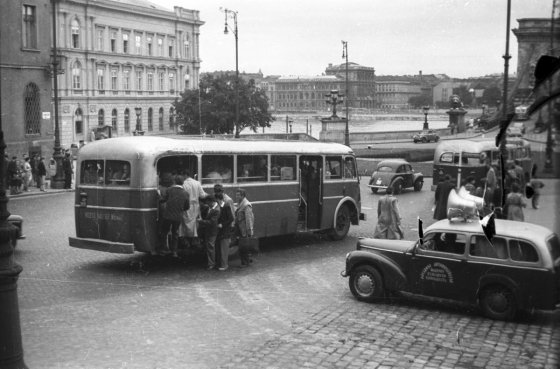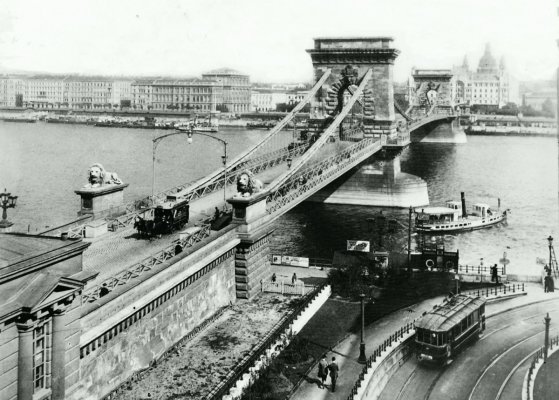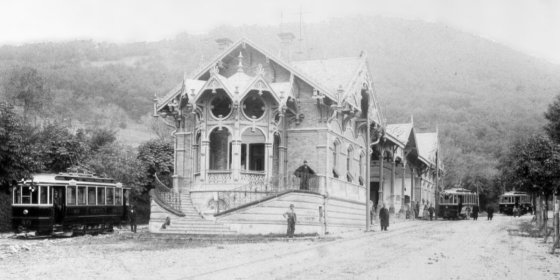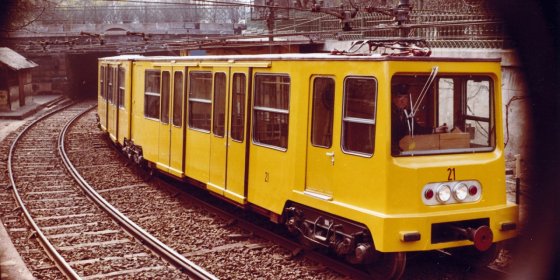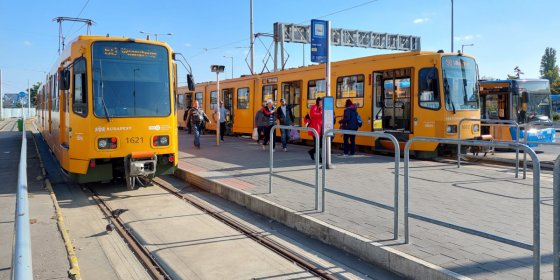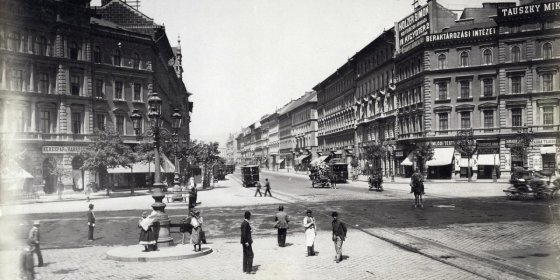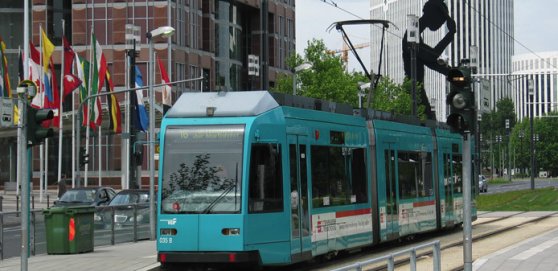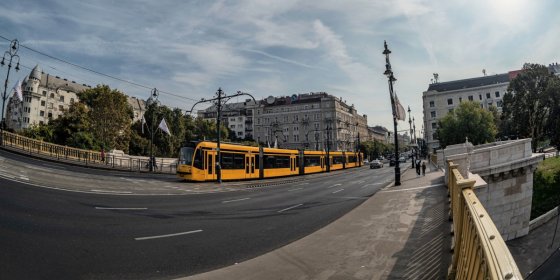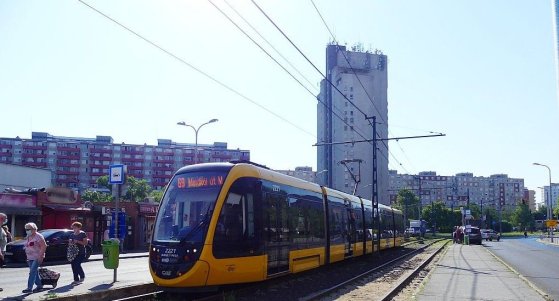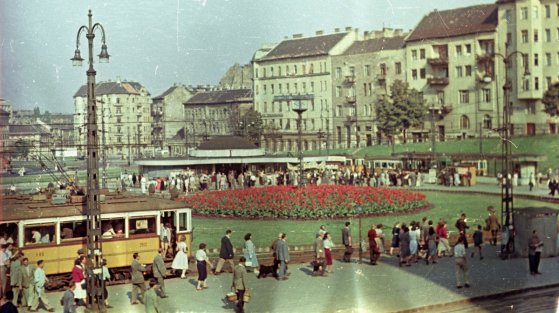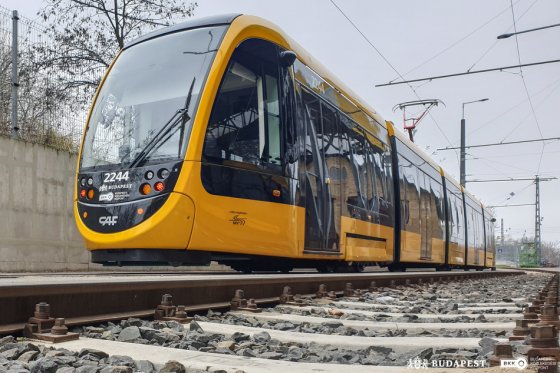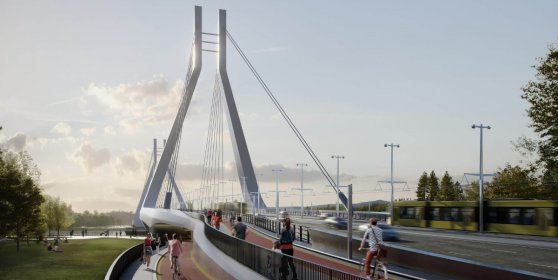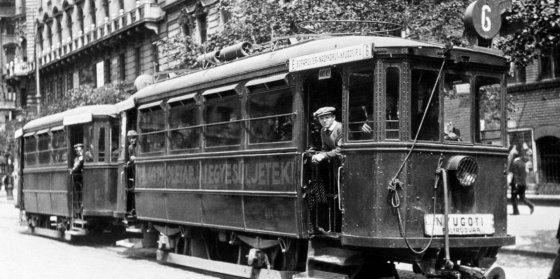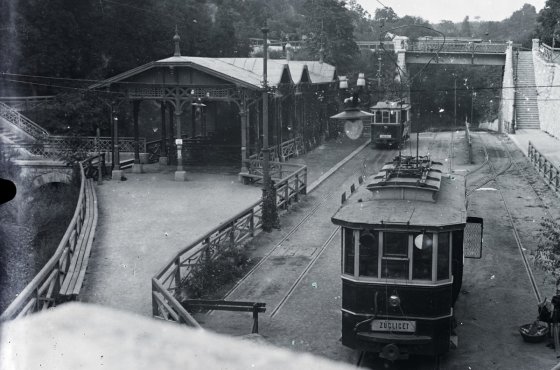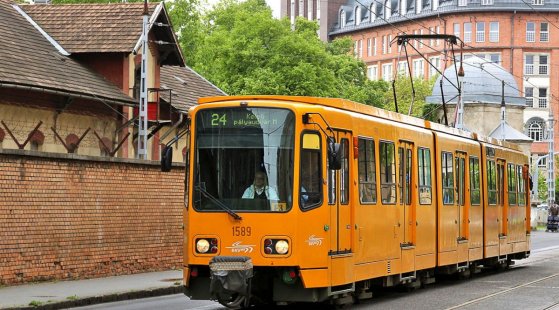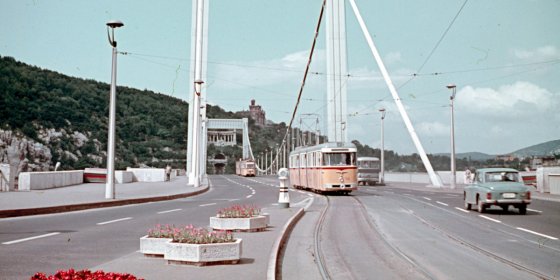 The „intertwined history” of the bridges and the city of Budapest
Which ideas and events have shaped the fate of bridges of Budapest and the cityscape? Alongside many other interesting facts, this question is also answered this newly published book by the Budapest City Archives, which introduces the history of bridges in Budapest.
The „intertwined history” of the bridges and the city of Budapest
Which ideas and events have shaped the fate of bridges of Budapest and the cityscape? Alongside many other interesting facts, this question is also answered this newly published book by the Budapest City Archives, which introduces the history of bridges in Budapest.
tram
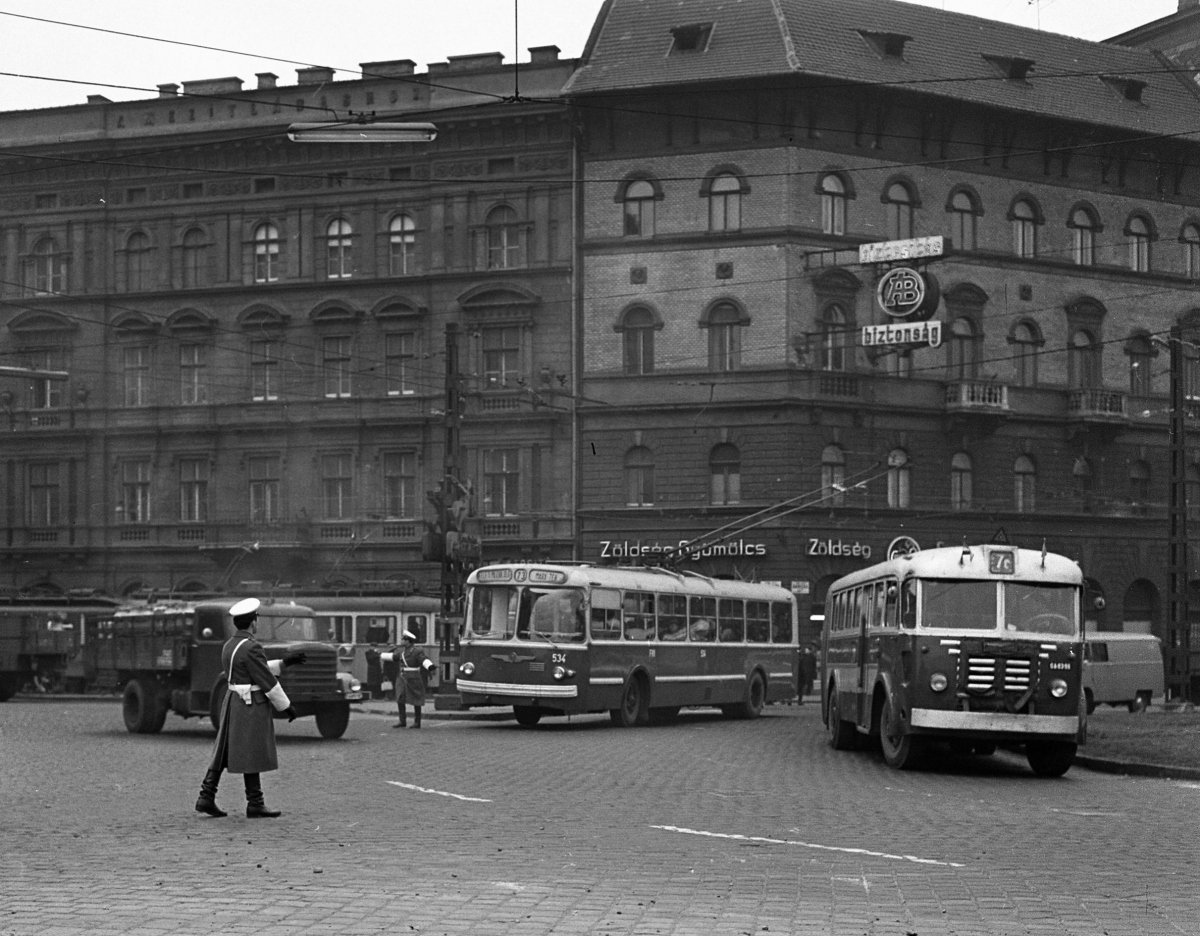 BKV was established 55 years ago - There was a ticket inspector on all vehicles and one could travel cheaply
BKV was established 55 years ago - There was a ticket inspector on all vehicles and one could travel cheaply
January 4, 2023 at 11:00 AM
On 1 January 1968, Budapest Transport Company took over the capital's public transport from three other companies. Until then, Budapest's trams, buses, suburban railways and other means of transport were operated by three independent companies, the Metropolitan Electric Railway Municipal Company, the Metropolitan Bus Municipal Company, and the Metropolitan Suburban Railway Municipal Company. In addition, the new organisation absorbed the Municipal Shipping Company.
The last tram passed through Rákóczi Road and Erzsébet Bridge 50 years ago
December 30, 2022 at 6:00 PM
Tram traffic started on Rákóczi Road already 125 years ago, and there was a time when five different lines passed through here. But the means of transport, which is very popular with the travelling public, was gradually pushed out of the inner city districts. The last tram passed through Rákóczi Road and Erzsébet Bridge 50 years ago, on 31 December 1972, and its journey ended at Móricz Zsigmond Square. The demolition of the tracks soon began. In recent years, it has been brought up more and more often that the tram should be brought back to this route.
Beszkárt, the capital's public transport company, was founded 100 years ago
December 28, 2022 at 6:00 PM
Budapest's public transport was operated by several companies for a long time, for example, there was a period when the tram services only were operated by three different companies. But 100 years ago, the Budapest Székesfővárosi Közlekedesi Részvénytársaság [Budapest Capital Transport Company], or Beszkárt, was founded, which soon gained control over all the capital's means of public transport.
The first tram in Budapest - 135 years ago, the new vehicle appeared on the Outer Ring Road
November 30, 2022 at 10:00 AM
At the end of November 1887, the people of Budapest could see a miracle that had not been seen before. A carriage moved by itself, it was not pulled by a horse or a steam locomotive. Although this vehicle ran on rails, the cars were pulled by horses in the city and huge steam locomotives on the railways. The first tram had a lower pantograph and travelled at a speed of 10 kilometres per hour, and was accompanied by a police officer at Oktogon.
Budapest to buy new low-floor, air-conditioned trams
October 27, 2022 at 9:30 AM
Another twenty new CAF-type trams may enter service in Budapest in 2024. The General Assembly of Budapest decided on the purchase of the trams on Wednesday.
Industrial articulated trams in the capital: Hungarian tram production ended with them
October 11, 2022 at 11:00 AM
Budapest is the city of trams. The capital would be unimaginable without the long yellow vehicles. An incredible number of types have worn the rails over the past 140 years, but few vehicles have been as defining as the industrial articulated tram.
Sightseeing trams run throughout the summer in the capital
June 7, 2022 at 2:00 PM
A sightseeing flight runs on weekend on tram line 19 between Kosztolányi Dezső square and the Margaret Bridge, Buda bridgehead stops. The tram will feature tourist attractions along the route, including the Hadik Café, Szent Gellért Square, Rudas Baths, the Castle Garden Bazaar, the Chain Bridge, Batthyány Square and Margaret Bridge.
BKV's vehicle fleet has been enriched with vintage trams
May 28, 2022 at 4:00 PM
As a result of long research and preparatory work, the vehicle fleet of BKV Zrt. Was enriched with two special, vintage trams. One is a motor car made in 1895 and the other is a trailer made in 1910. Their restoration is scheduled to begin soon.
From tomorrow, the nostalgia trams will run again
May 6, 2022 at 2:30 PM
The image of Budapest includes the old trams. From Saturday there will be nostalgic trams again, the vehicles will run between the city center and Óbuda.
Sixty years ago, Budapest was at a crossroads - the transport of the capital in the 1960s
April 23, 2022 at 2:00 PM
Budapest's traffic was at a crossroads 60 years ago as well as now. Experts sought answers to questions about how much the then outdated public transport network needs to be developed and how to prepare the city for the expected car traffic. Studies have also helped to make these decisions. Based on a work published 60 years ago, we present the transport dilemmas of Budapest at that time.
The tram started on the Várkert Embankment 115 years ago
February 1, 2022 at 9:00 AM
The tramway at the Chain Bridge bypasses the Buda end of the bridge in a tunnel, under the ground. However, when it was built, the tramway was debated for 9 years by the Budapest City Council and the Budapest Public Works Council, it was difficult for them to decide whether to run the tram on the upper or lower embankment. In the end, the dispute was concluded, so 115 years ago, in 1907, trams could start south of the Chain Bridge.
The legendary Zugliget tram line was shut down 45 years ago
January 17, 2022 at 2:00 PM
One of the most popular tram lines, the last of which was the iconic tram 58, was discontinued 45 years ago, on 17 January 1977. One of the first tram lines on the Buda side was the one in Zugliget, which started in 1896, the year of the millennium, and although it was replaced by the 58V replacement bus after the 1977 shutdown, then the 158 bus, and today the 291 bus, to this day, many are waiting for the revival of the tram line in the capital.
The first new train of the Millennium Underground was unveiled 50 years ago
December 13, 2021 at 9:00 AM
Today's Millennium Underground vehicles have appeared in Budapest's tram lines 50 years ago. Yes, on the surface, because the first prototypes were tested on tram lines. Why were new vehicles needed 50 years ago and how were they made?
Trams from Hanover have been operating in Budapest for 20 years
October 2, 2021 at 4:00 PM
After a long time in the rich tram park of Budapest, the first vehicles manufactured in Western Europe were the trams from Hanover with their characteristic opening staircases, which were put into traffic for the first time on 3 October 2001.
The Outer Ring Road was inaugurated 125 years ago - Budapest's main road was opened on Hungary's millennium
September 4, 2021 at 10:00 AM
Today, Outer Ring Road is one of the busiest roads in Budapest, lined with beautiful residential houses. Its construction lasted for 25 years, to open it, houses had to be demolished, a railway station had to be moved away, an area had to be filled, but finally, 125 years ago, on 31 August 1896, the Budapest Public Works Council could officially hand it over to the Budapest community.
Will there be air conditioning on the Frankfurt trams coming to Budapest?
July 6, 2021 at 5:00 PM
According to the BKV (Budapest Transit Company), the air conditioning of used Frankfurt trams can be solved by structural modifications.
Many kinds of trams have served Budapest in recent decades
July 6, 2021 at 9:30 AM
UV, ICS, Bengali, CAF, Combino, Hanover - these trams have defined tram transport in Budapest in recent decades. Now more CAF products are in service, but take a look at what kind of trams the people of Budapest used and what do these weird names mean?
CAF tram arrives in Újpalota for weekends
June 19, 2021 at 2:00 PM
Only on weekends and twice every hour, but commuters can now travel on modern CAF trams on the 69 tram line connecting Mexikói Road in Zugló with the Újpalota housing estate. For the time being, the other vehicles on the line will remain. Known as the Hannover tram, its high steps make travel difficult for many.
Széll Kálmán Square became a transport hub 80 years ago
June 18, 2021 at 9:30 AM
There was once a clay mine and then a sports field on the site of today's Széll Kálmán Square, where the tram junction and the pedestrian overpass, which defined the image of "Kalef" for decades, were completed 80 years ago, in June 1941. Then, in the middle of the square, a roundabout was created for trams, from where vehicles could depart in all directions. Modern passenger waiting areas and bus terminals were also built, but the development did not fully win the favour of the contemporary public.
New trams heading for Budapest
May 17, 2021 at 6:00 PM
The Budapest Transport Center (BKK) has agreed with the manufacturer of CAF trams. Until mid-May 2022, BKK will be able to call the 51 optional vehicles included in the 2014 contract at the original price.
Planning of new tramway for Southern Danube Bridge begins
March 10, 2021 at 4:00 PM
The tramline for the future Galvani Bridge is being planned. The new, two-track, four-kilometre tramway will run from Fehérvári Road in Buda across the new Danube bridge and North Csepel, and over the new Ráckeve-Danube bridge to Gubacsi Road in Pest.
Where the No. 6 stops – The trams of Budapest have been numbered for 111 years
February 12, 2021 at 11:00 AM
For the modern commuter, the fact that trams and buses have numbers is obvious – but this was not always the case. In fact, numbers first appeared on trams in Budapest in 1910. Even the system's introduction had its bumps as trams often turned in different directions than what their number would have suggested, meaning not only passengers but drivers and conductors had to get used to the new solution.
Former tram terminus in Zugliget to be renovated
January 6, 2021 at 3:00 PM
The former tram terminus at Zugliget is to be renovated as part of the Normafa Park Program, with additional funding provided by the government. A new skating rink will be added to the complex.
First section of Pest's intertwining tram network completed
November 6, 2020 at 2:00 PM
The first section of the Pest tram network development has been completed in Ferencváros. The development will support diversion efforts during the renovation of Metro line M3, as the 2M tram will provide a direct connection between Nagyvárad Square and the city centre.
A debate raging since the 19th century: Trams on Budapest bridges
September 10, 2020 at 11:00 AM
The question of running tracks across Margaret Bridge lead to a major debate during its construction, while trams only started running on Rákóczi bridge 20 years after its construction. Original plans for the bridge to be constructed near Galvani Street did not allocate rooms for trams. Nevertheless, it seems certain that guided transportation connections between Buda and Pest will remain for decades to come.
More articles
 The „intertwined history” of the bridges and the city of Budapest
Which ideas and events have shaped the fate of bridges of Budapest and the cityscape? Alongside many other interesting facts, this question is also answered this newly published book by the Budapest City Archives, which introduces the history of bridges in Budapest.
The „intertwined history” of the bridges and the city of Budapest
Which ideas and events have shaped the fate of bridges of Budapest and the cityscape? Alongside many other interesting facts, this question is also answered this newly published book by the Budapest City Archives, which introduces the history of bridges in Budapest.
 The Bridge Report, which brought a turning point in the history of Budapest
A travel report that changed the history of Pest and Buda, as well as Hungary. The little book contributed to the change of half a thousand years of legal customs and the implementation of an investment of unprecedented size and technical quality. This book was The Bridge Report [Hídjelentés in Hungarian].
The Bridge Report, which brought a turning point in the history of Budapest
A travel report that changed the history of Pest and Buda, as well as Hungary. The little book contributed to the change of half a thousand years of legal customs and the implementation of an investment of unprecedented size and technical quality. This book was The Bridge Report [Hídjelentés in Hungarian].
 Drama on the university wall - The heroic monument was planned 95 years ago
In the constant hustle and bustle of the Egyetem Square in Pest, the students may not even notice the monument that decorates the short section of wall between the church and the central building of ELTE. However, it commemorates their predecessors, the heroes who fought for their country in World War I, and those who heroically helped them. The first design of the dramatically collapsing soldier was born in 1928, ninety-five years ago.
Drama on the university wall - The heroic monument was planned 95 years ago
In the constant hustle and bustle of the Egyetem Square in Pest, the students may not even notice the monument that decorates the short section of wall between the church and the central building of ELTE. However, it commemorates their predecessors, the heroes who fought for their country in World War I, and those who heroically helped them. The first design of the dramatically collapsing soldier was born in 1928, ninety-five years ago.

